So, cyclocross: it’s just a bunch of roadies riding around a field for an hour, right? Well, strictly speaking, you could say that, but you wouldn’t be able to hold your own in the local LBS if that’s the extent of your knowledge.
Let me enlighten you in the way of ’cross, my young padawan.
It’s easy to see why you might hold the view expressed above. Traditionally, ’cross races have featured bikes with skinny tyres and drop bars, as with roadie events; and yes, races are often in fields and last an hour, but there’s more to it than that…
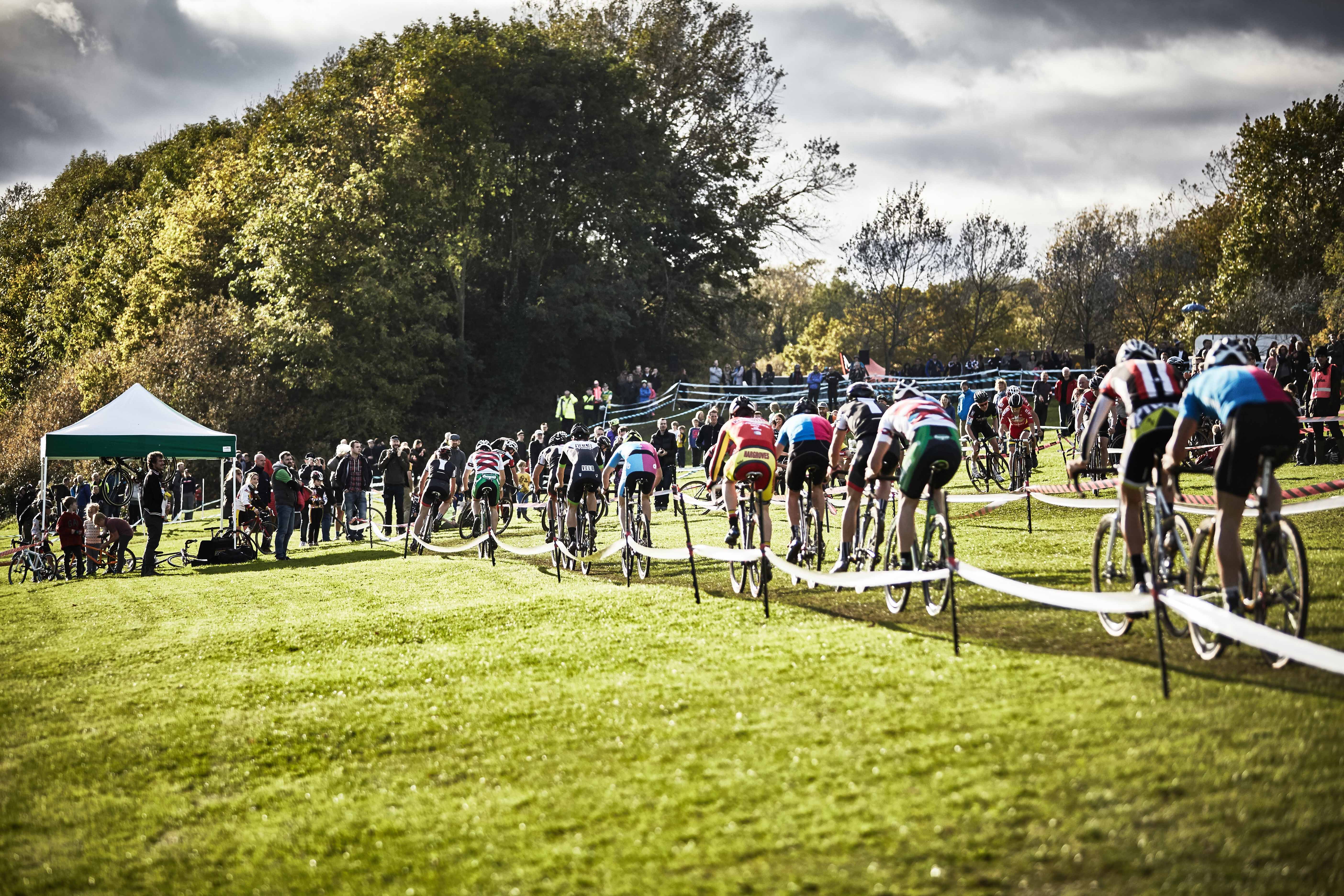
Okay, let’s start with the bikes. There are historical reasons why ’cross bikes look like road bikes—they share a common heritage. Back in the dim and distant past, 60-odd years ago, ’cross racing was something roadies did in the off-season to keep their fitness up. It was viewed as a cheap form of racing, and hence bikes were often cobbled together from old parts.
The starting point, just like any bike really, was the frame. While there was, like now, no shortage of frame builders that could braze up a suitable frame for you, that’s an expensive option. A much cheaper and more popular choice was to get a second-hand touring frame. Why a touring frame? A longer wheelbase with greater clearance around the tyres and more relaxed frame angles are some useful features for a ’cross build. The other bonus of an old touring frame was that they would have braze-ons for cantilever brakes.
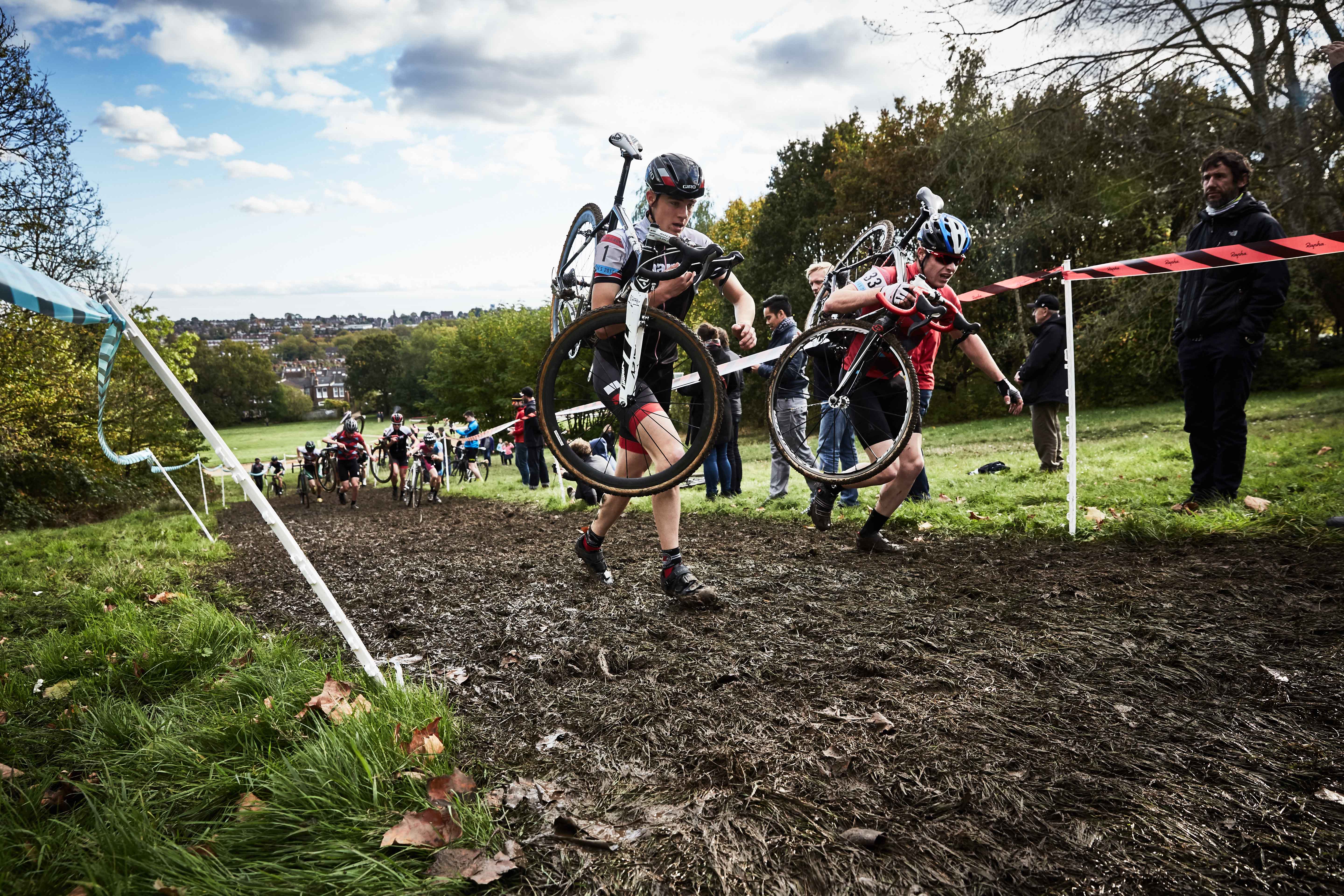
Canti-whats? In a time before mountain bikes drove bicycle technology, if you wanted decent braking and mud clearance cantilevers were the only choice, and they were also common among touring riders who needed to slow down fully laden machines.
There are plenty of riders today that would argue that cantilevers are still all you need for ’cross racing. After all, you don’t actually want to stop the bike, just slow it down a bit. The other argument is that disc brakes are too powerful for the minimal contact patch of a cyclocross bike’s tyre.
While sponsored riders can afford to have a spare bike that they can swap in the pits during a race, mere mortals have to make do with a spare pair of wheels. Why two bikes or spare wheels? Well, unlike in a (longer) mountain bike race, you don’t carry a multi-tool and a spare tube. If you get a puncture or the bike gets too mud-laden, swap it or change the wheels.
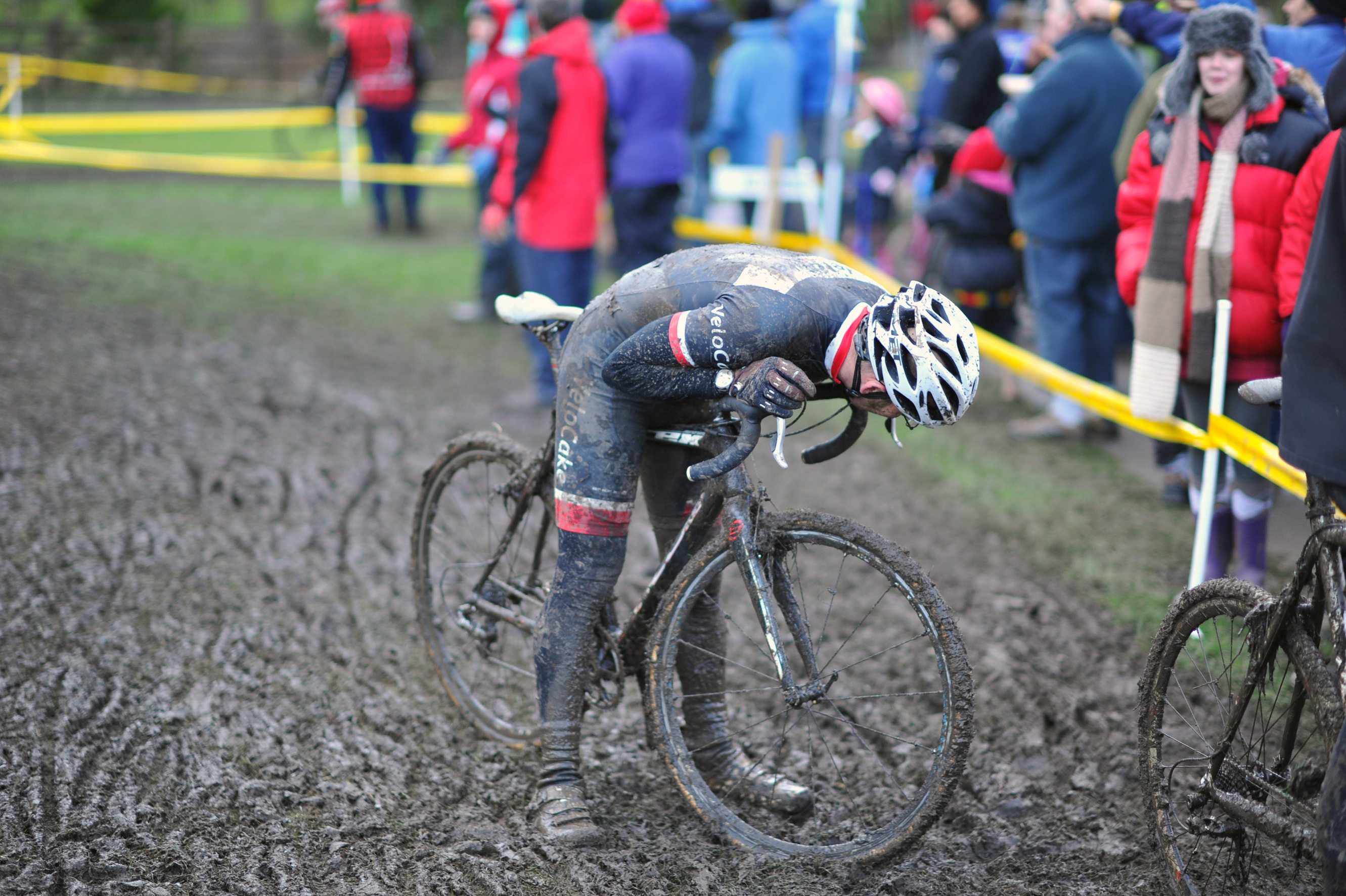
Plus, if you’ve ever tried to change a tub in a hurry, you’ll know that swapping a wheel in a race is a far better idea. Oh sorry, did I just lose you there with “tub”? Tubs, short fortubular tyres, are the original form of tubeless tyres. [They’re also known as ‘sew-ups’ in the US. -Ed.] With a tub, the inner tube is sewn inside a lightweight tyre that has no beads to hook it onto the rim. The tub is held in place either by special sticky tape or glue. Tubs can be run at fairly low pressures, giving good grip on slippery surfaces, and save some weight.
Anyhow, back to the bike.
Mountain bikes have a lot to answer for. Their invention doubtlessly helped push forward technology in cycling, and so now you can have a ’cross frame in aluminium, carbon or titanium flavours. Easy entry double-sided clipless pedals; mountain bikers again. One-by drivetrains… You get the idea.
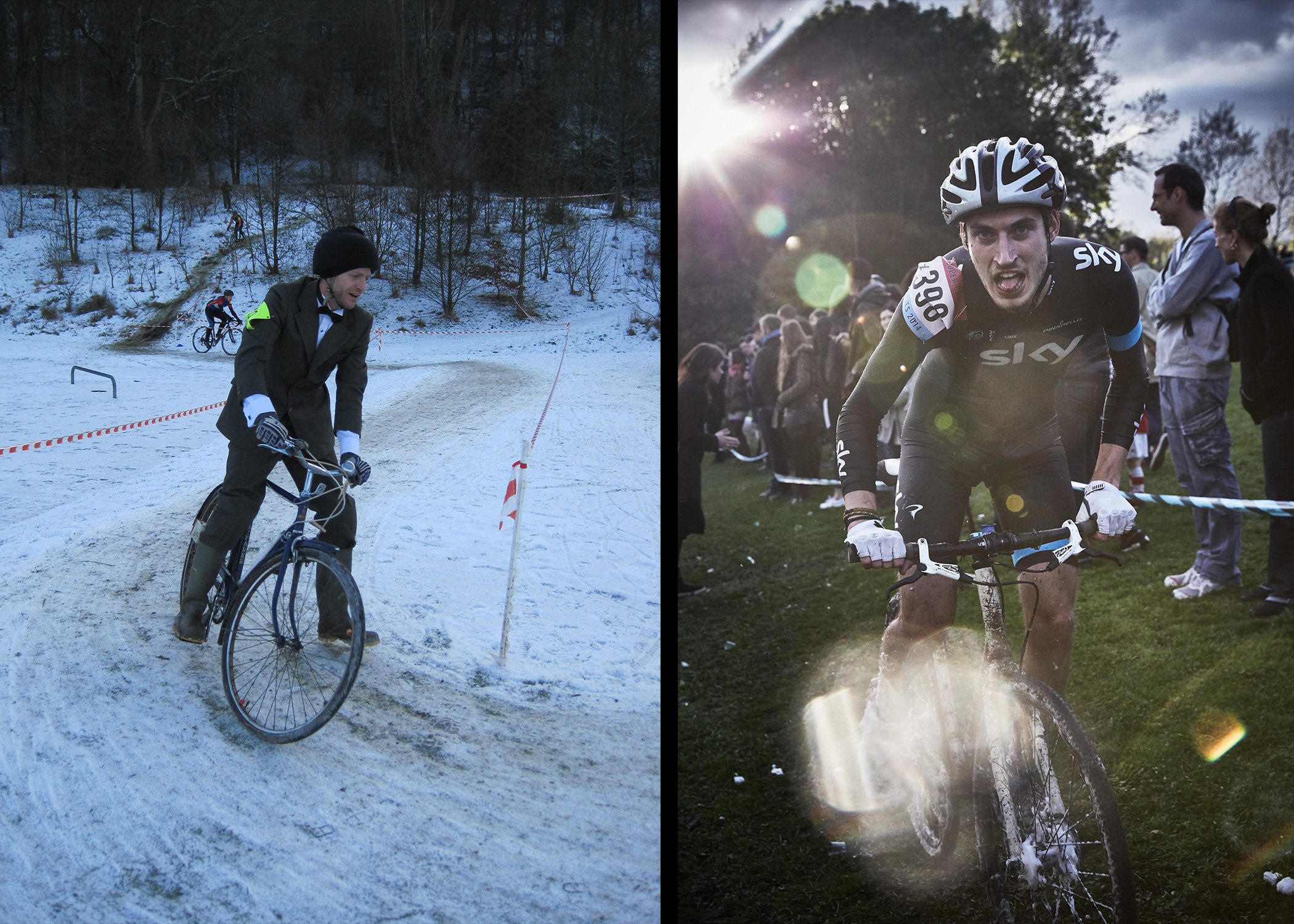
I’m just going to take another quick diversion here and talk about aluminium frames. When mountain biking was still a youngster, there were aluminium ’cross bike frames, but not as we know them today. Made by French brand Alan, they featured skinny tubes bonded into lugs, visually similar to brazed steel frames. However, their life expectancy was not as long as steel frames. Any old timers will be sure to have tales of creaking frames and breakages mid-race.
Today, the increased popularity of disc brakes, gravel bikes and 29-inch wheeled mountain bikes with drop bars (sometimes known as monster-cross bikes) are blurring the lines about what’s considered a ’cross bike. But hey, if it makes the sport more accessible, it can only be a good thing, right?
So where do you race your ’cross bike now that you’ve got yourself sorted out with one?
For many years, ’cross was something of an underground scene; it simply didn’t get mainstream media coverage. While it still doesn’t, it does at least get more exposure in the specialist press. (Hey, it’s one of the reasons for Grit.cx’s existence, after all.)

That lack of exposure meant there was never much money involved, which meant races used to be run as cheaply as possible. This is why, back in the day, a cyclocross course could be laps of a farmer’s field. Now, riding laps of a field for an hour would quickly get boring even for the most diehard racer. Fortunately, this is why ’cross has its own challenges built in. The most common of these is simply planks. A plank doesn’t really sound that challenging, does it? Well, place it on its edge and then do the same with some more, and there’s no way you can ride over them. If the spacing is thought out even the best riders can’t bunny-hop them.
If you want to look like a pro when it comes to ’cross obstacles, you need to learn how to jump on and off your bike—this in itself is an art. Getting off isn’t too hard, so long as you remember to unclip from the pedals. Getting back on can be eye-watering if you get it wrong. The idea is that as you run alongside your bike, you take a leap and land on the saddle, ready to sprint away. Here’s a little trick of the trade—boys, make sure you land on the inside of your thigh. You’ll thank me for this one.
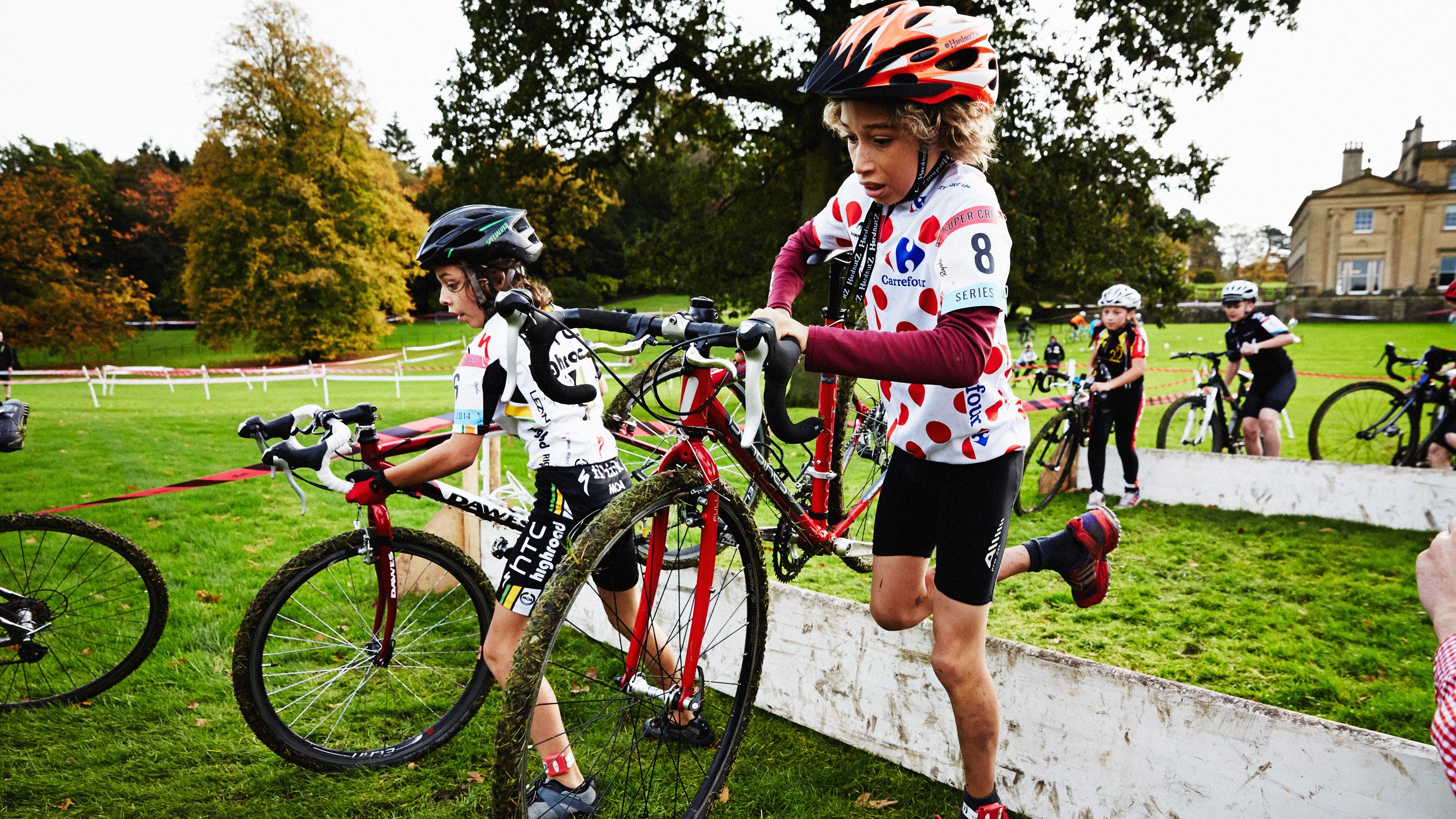
Once you’ve mastered the dismount and the jump back onto the bike, the next trick is to pick the bike up and shoulder it in one smooth sweeping movement.
Why do you need to carry your bike? Well, it’s an easy way to get over those planks I was talking about. There are also some fiendish course designers who put sand banks in each lap. That might not sound like much of an obstacle, but try riding a bike with narrow tyres on the beach and you’ll soon see just how much it can slow you down.
Cyclocross racing wasn’t much fun for spectators back in the olden days. Remember, this was racing on the cheap, so forget mobile catering offering street food and craft beers; it was a flask of warm tea and a sandwich from home. Not that you’d get a lot of spectators anyway. Who’d want to watch a clutch of roadies riding around a field hopping over planks?
Fortunately, European cyclists know how to have a good time, and this extends to ’cross racing, too. At Belgium ’cross races, it’s normal for the dominant sound to be the ringing of cowbells. Such enthusiasm is no doubt helped by the consumption of numerous beers. It’s a similar story of frivolity in the US as well. The rise of singlespeed racing there made things get really crazy, with novelty features such as shortcuts for riders who took a shot of spirits.
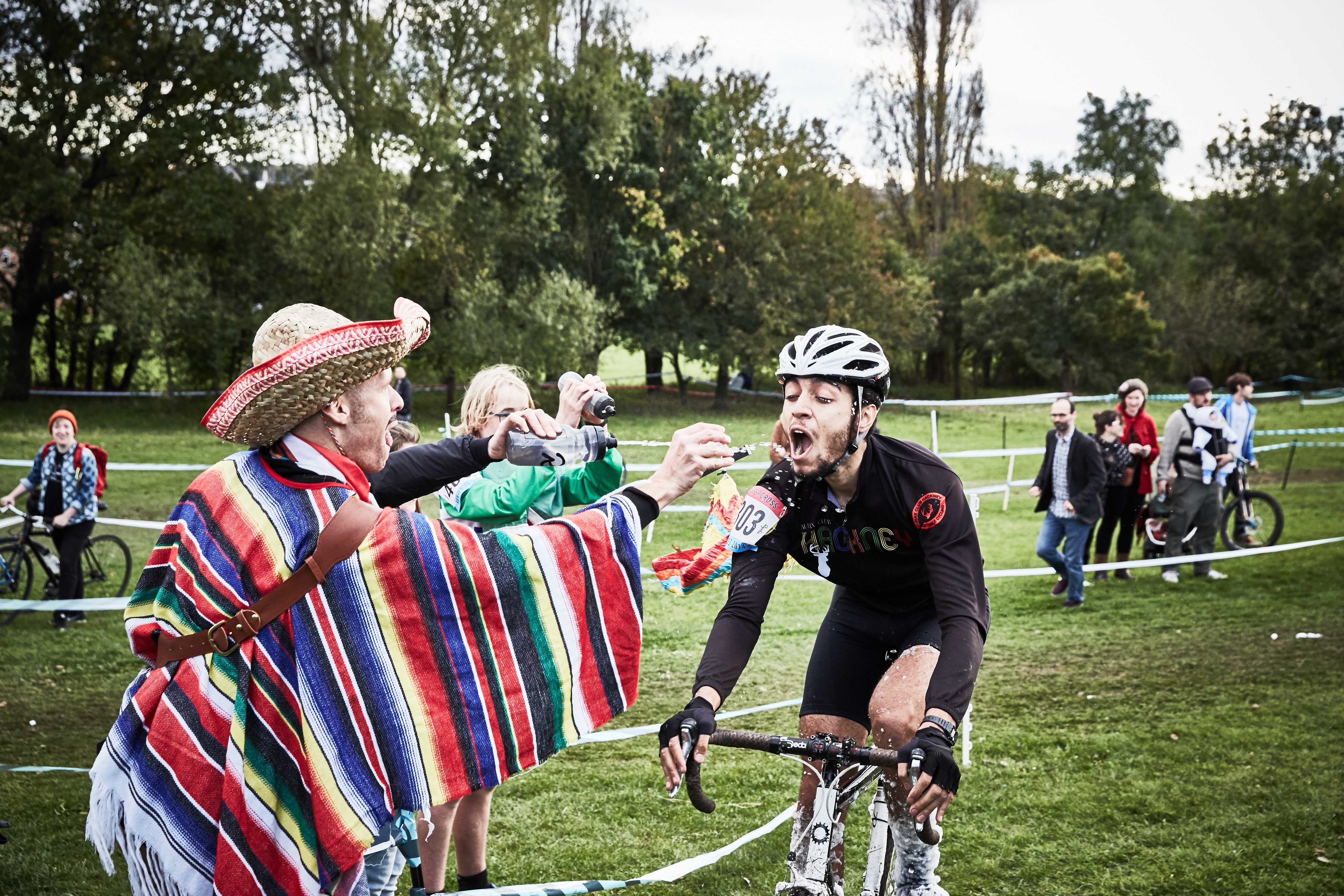
Now, thanks to that wonderful invention called the internet, race organisers in the UK started to see what was going on in Europe and the US and took note. Among those was one Chipps Chippendale, of this parish, and the man responsible for Todmorden Cyclocross.
Why is Tod ’cross worth special mention? It was one of the first UK races to inject a bit of fun into proceedings. Never before had a ’cross event featured a brass band. That’s right: a brass band at the side of the track playing to entertain the riders and spectators. The Todmorden races also messed around with course designs. Here was a circuit that was easy to get to, accessible for spectators, and for riders, new challenges such as a section of cobbles.

Rapha may have gotten a lot more people interested in urban ’cross with their Super Cross races, but if you move in London’s inner circle of cycling, you’d have known about cyclocross race meetings at Herne Hill velodrome. Yes, you read that right, ’cross racing at a velodrome. Built in 1891, Herne Hill is an old school outdoor track—but it does have quite a bit of land around it, and this has frequently been used for ’cross races when the weather’s been too bad to take to the track. Just think: if life had taken a different turn, Bradley Wiggins could have been a ’cross superstar.
Okay, so maybe I’m being a touch facetious there, because are there really any superstars in the UK? Well, there have been some good riders. In the early days of mountain bike competition, all the best UK riders had cut their teeth racing ’cross before making the move to fat tyres. Although now known as pioneering MTB racers, the likes of Tim Gould, Dave Baker, Barrie Clark and Nick Craig were among those that led the charge.
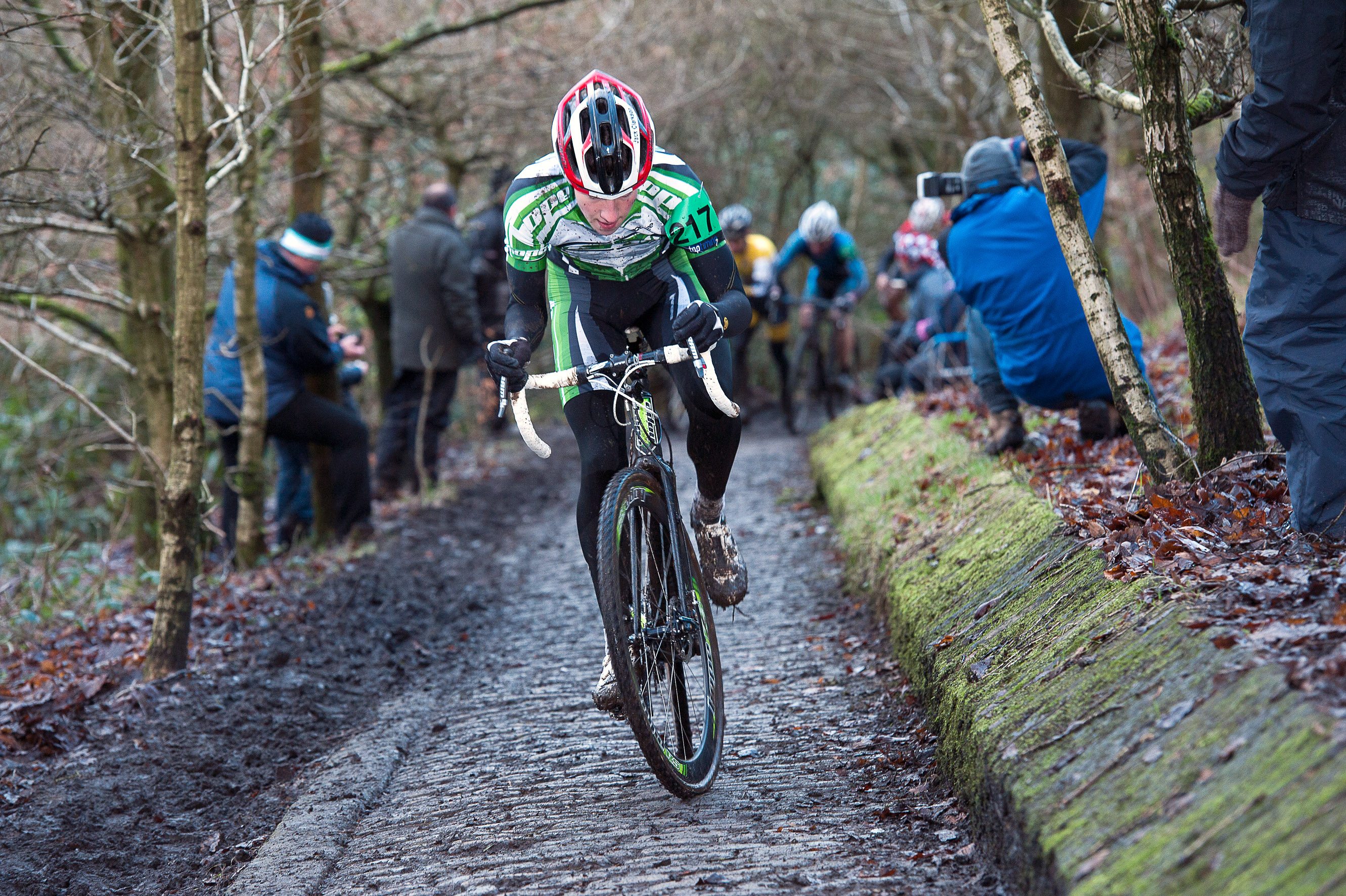
At the turn of this century, both Clark and Craig may have turned their collective back on the MTB scene, but they were still regularly placing in the top five at the National ’cross Championships. The man that kept beating them was the closest this country has ever got to a cyclocross superstar—Roger Hammond. Never heard of him? Y’see, that’s what I mean about ’cross racing being the ginger stepchild of UK cycling. Poor old Roger, the National Cycling Champion no-one’s ever heard of.
So now that you know what to ride and where to ride it, it’s time to get out there and give ’cross the recognition it deserves. Go out and wear your cyclocross geek anorak with pride.
Comments (2)
Leave Reply
Post Comment

Excellent piece. A few years ago at the age of 59 I did my first cyclocross race. I came in a creditable last place(retired). Cyclocross gets you, your bike, and everything else very muddy, on the whole it is best if you dislike your car and don’t mind getting it very dirty.
Excellent piece. A few years ago at the age of 59 I did my first cyclocross race. I came in a creditable last place(retired). Cyclocross gets you, your bike, and everything else very muddy, on the whole it is best if you dislike your car and don’t mind getting it very dirty.